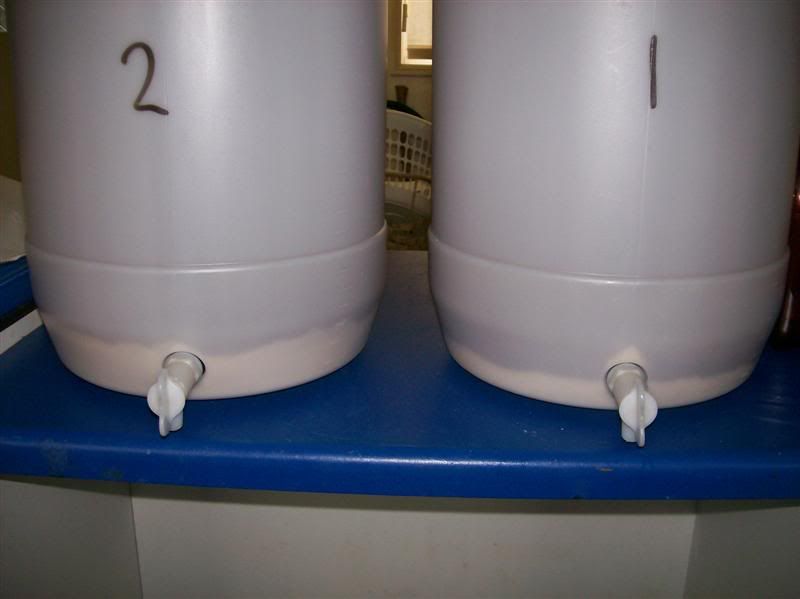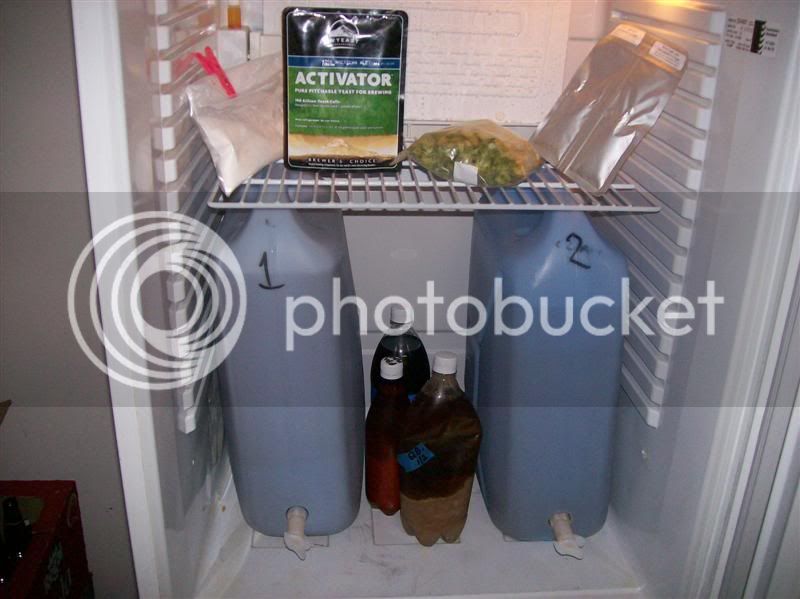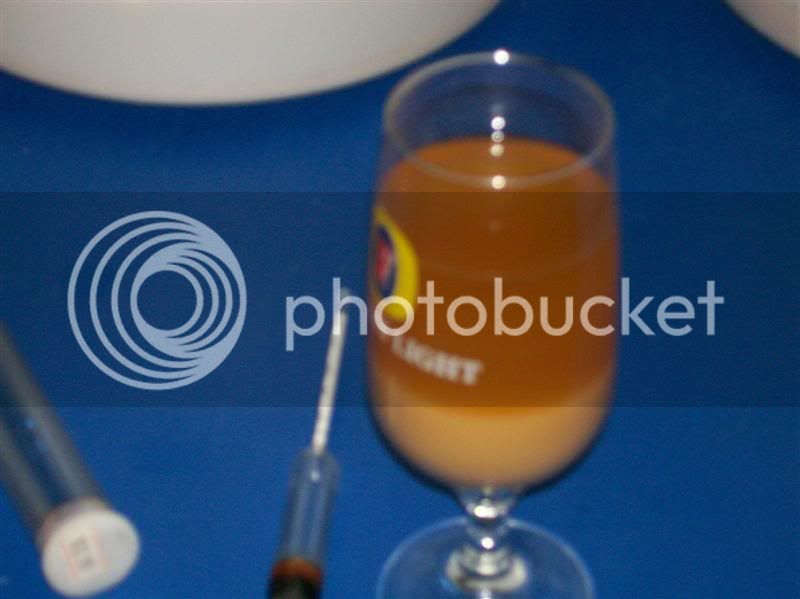Primary finished, I raised the beers to 19 degrees for a couple of days then into cubes for a couple of weeks of lagering.
To recap, #1 is the little or no cold break, #2 got a lot more.
During fermentation, both beers kept perfect pace with each other, bloop for bloop through the airlocks (yes I know we are talking
kittens airlocks here but I have a good seal)

Both have attenuated identically to just at tad below 1010.
Most noticeable is the layer of cake on the bottom.
#2 would have to have at least twice the sludge in the bottom of the fermenter.
And on racking to lagering cube, the resulting difference in yield is quite noticeable.
There is a slight difference in taste, at this stage. #1 seems to be a bit sharper and dryer, #2 seems somehow "fuller" and more bready. Early days.
So it's obvious that the yeast cake is not just yeast, it contains a lot of ex-cold-break material. So with a typical AG brew, if you pitch yeast cake you are not just pitching yeast, you are also pitching some second hand cold break debris - which bears thinking about.
The "good yeast nutrient" theory doesn't seem to be borne out here, the two beers fermented and attenuated in tandem, to virtually identical gravity.
So at the current stage : all I can conclude from this so far is that cold break steals green beer volume.
It's very hard to remove cold break from a single brew as it's quite fluffy.
However when it's been through a fermentation it seems to 'curdle' and become far more flocculent. Here's a pic of the glass of sludge I drew off to "clear the throat" of the fermenter before running to lagering cube:
After 20 mins or so it's starting to form a distinct layer. So it's got me thinking that - until we see what the final flavour, clarity and stability is then an idea could be to (initially) brew a litre or more over the desired 'yield' to get a full cube for lagering, and leave the cold break-derived material behind when you rack to secondary or lagering.
More in 2 weeks.







